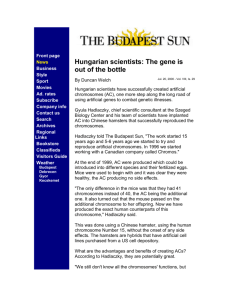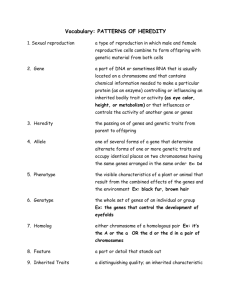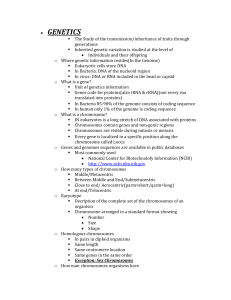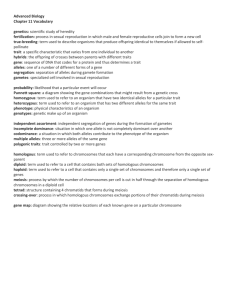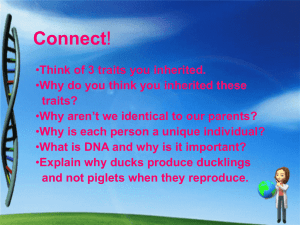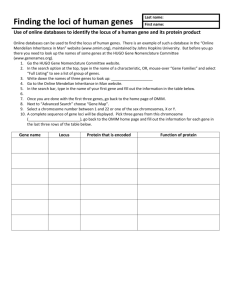Topic 3.1-3.2 Understandings
advertisement
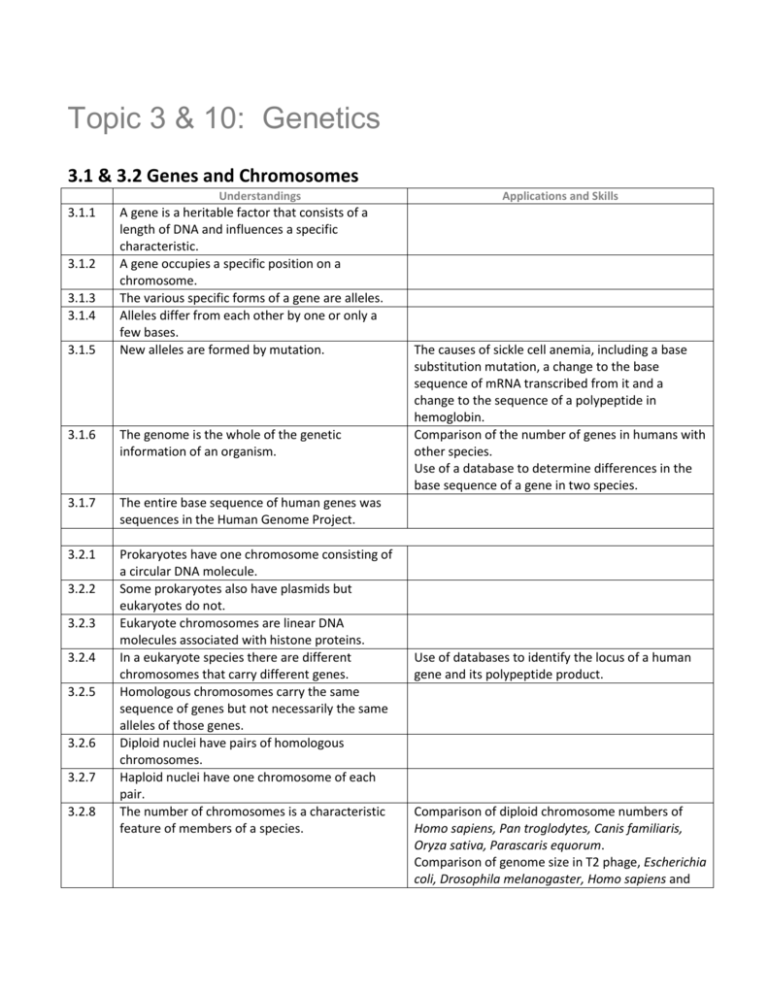
Topic 3 & 10: Genetics 3.1 & 3.2 Genes and Chromosomes Understandings 3.1.1 3.1.2 3.1.3 3.1.4 3.1.5 A gene is a heritable factor that consists of a length of DNA and influences a specific characteristic. A gene occupies a specific position on a chromosome. The various specific forms of a gene are alleles. Alleles differ from each other by one or only a few bases. New alleles are formed by mutation. 3.1.6 The genome is the whole of the genetic information of an organism. 3.1.7 The entire base sequence of human genes was sequences in the Human Genome Project. 3.2.1 Prokaryotes have one chromosome consisting of a circular DNA molecule. Some prokaryotes also have plasmids but eukaryotes do not. Eukaryote chromosomes are linear DNA molecules associated with histone proteins. In a eukaryote species there are different chromosomes that carry different genes. Homologous chromosomes carry the same sequence of genes but not necessarily the same alleles of those genes. Diploid nuclei have pairs of homologous chromosomes. Haploid nuclei have one chromosome of each pair. The number of chromosomes is a characteristic feature of members of a species. 3.2.2 3.2.3 3.2.4 3.2.5 3.2.6 3.2.7 3.2.8 Applications and Skills The causes of sickle cell anemia, including a base substitution mutation, a change to the base sequence of mRNA transcribed from it and a change to the sequence of a polypeptide in hemoglobin. Comparison of the number of genes in humans with other species. Use of a database to determine differences in the base sequence of a gene in two species. Use of databases to identify the locus of a human gene and its polypeptide product. Comparison of diploid chromosome numbers of Homo sapiens, Pan troglodytes, Canis familiaris, Oryza sativa, Parascaris equorum. Comparison of genome size in T2 phage, Escherichia coli, Drosophila melanogaster, Homo sapiens and Paris japonica. Use of karyograms to deduce sex and diagnose Down syndrome in humans. Cairns’ technique for measuring the length of DNA molecules by autoradiography. 3.2.9 A karyogram shows the chromosomes of an organism in homologous pairs of decreasing length. 3.2.10 Sex is determined by sex chromosomes and autosomes are chromosomes that do not determine sex. Cambridge University Press – Biology for the IB Diploma 3.1 – pages 93-98 3.2 – pages 99-103



